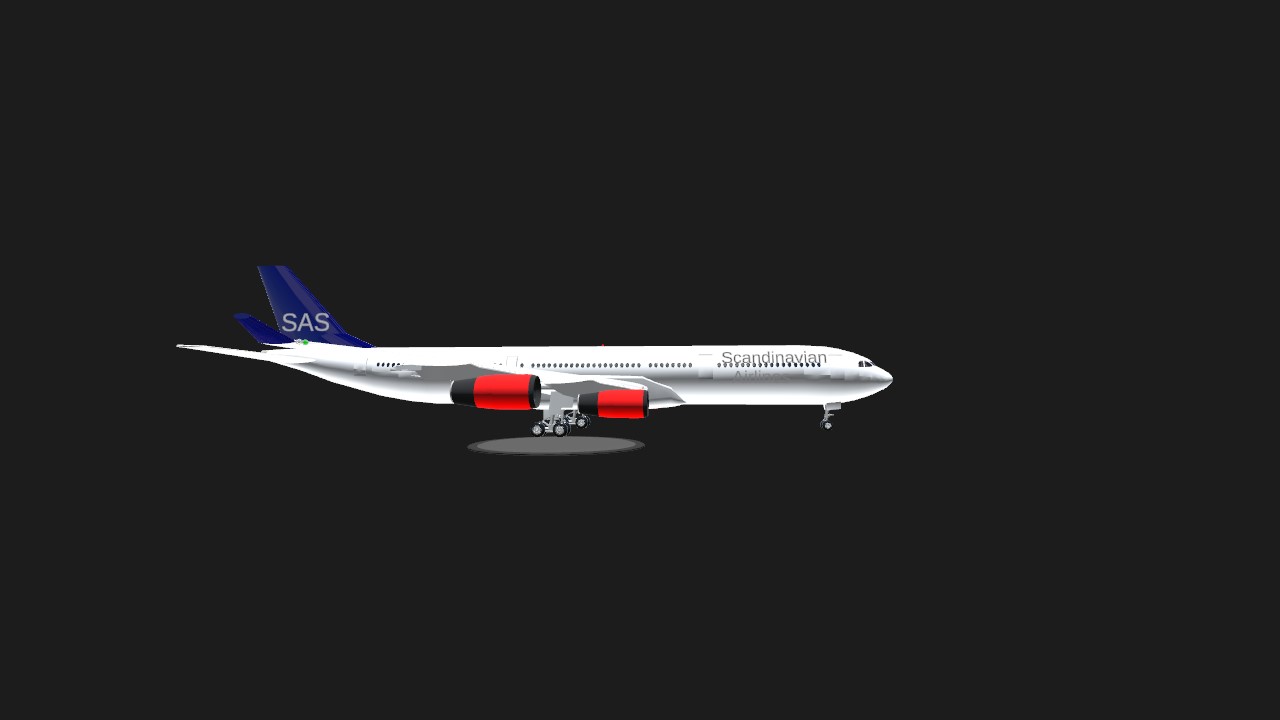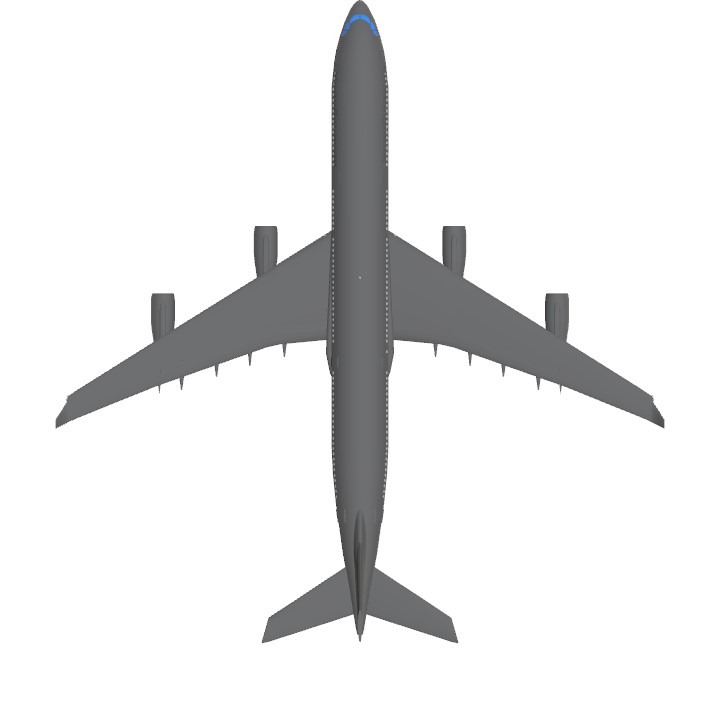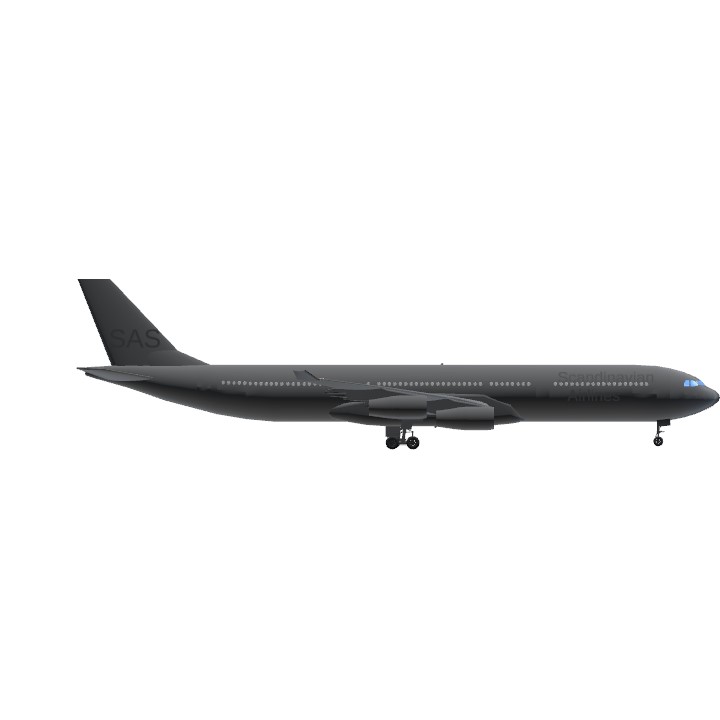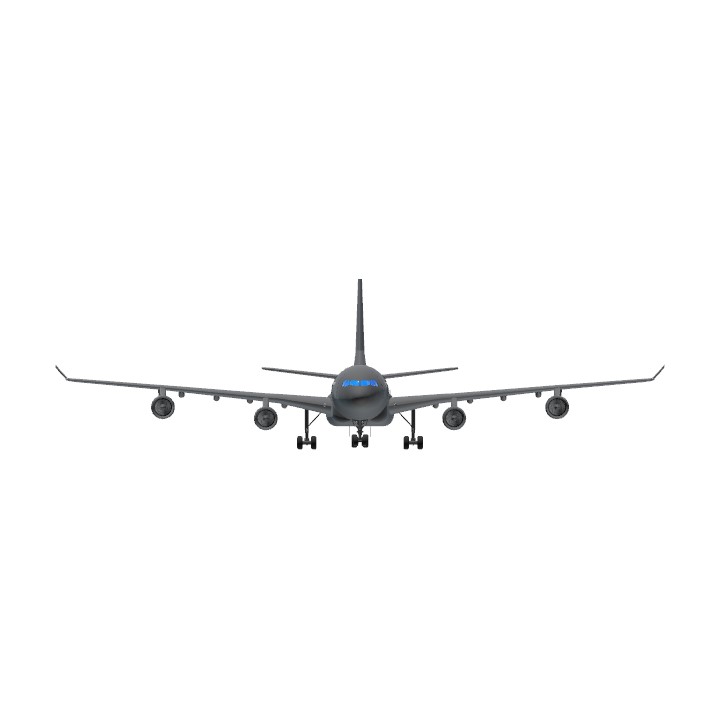About A340
The Airbus A340 is a long-range, wide-body passenger airliner that was developed and produced by Airbus. In the mid-1970s, Airbus conceived several derivatives of the A300, its first airliner, and developed the A340 quadjet in parallel with the A330 twinjet. In June 1987, Airbus launched both designs with their first orders and the A340-300 took its maiden flight on 25 October 1991. It was certified along with the A340-200 on 22 December 1992 and both versions entered service in March 1993 with launch customers Lufthansa and Air France. The larger A340-500/600 were launched on 8 December 1997, the A340-600 flew for the first time on 23 April 2001 and entered service on 1 August 2002.
Keeping the eight-abreast economy cross-section of the A300, the early A340-200/300 has a similar airframe to the A330. Differences include four 151 kN (34,000 lbf) CFM56s instead of two high-thrust turbofans to bypass ETOPS restrictions on trans-oceanic routes, and a three-leg main landing gear instead of two for a heavier 276 t (608,000 lb) MTOW. Both airliners have fly-by-wire controls, which was first introduced on the A320, as well as a similar glass cockpit. The later A340-500/600 have a larger wing and are powered by 275 kN (62,000 lbf) Rolls-Royce Trent 500 for a heavier 380 t (840,000 lb) MTOW.
The shortest A340-200 measured 59.4 m (195 ft), and could cover 12,400 km / 6,700 nmi with 210–250 seats in 3-class. The most common A340-300 reached 63.7 m (209 ft) to accommodate 250–290 passengers and had a 13,500 km / 7,300 nmi range. The A340-500 was 67.9 m (223 ft) long to seat 270–310 over 16,670 km / 9,000 nmi, the longest-range airliner at the time. The longest A340-600 was stretched to 75.4 m (247 ft), then the longest airliner, to accommodate 320–370 passengers over 14,450 km / 7,800 nmi.
As improving engine reliability allowed ETOPS operations for almost all routes, more economical twinjets have replaced quadjets on many routes. On 10 November 2011, Airbus announced that the production reached its end, after 380 orders had been placed and 377 delivered from Toulouse, France. By the end of 2021, the global A340 fleet had completed more than 2.5 million flights over 20 million block hours and carried over 600 million passengers with no fatalities. The A350 is its successor; the McDonnell Douglas MD-11 and the Boeing 777 were its main competitors. Lufthansa is the largest operator and the largest customer with 34 A340 aircraft in its fleet.
About SAS
Scandinavian Airlines, more commonly known and styled as SAS, is the flag carrier of Denmark, Norway, and Sweden.[3] SAS is an abbreviation of the company's full name, Scandinavian Airlines System[4] or legally Scandinavian Airlines System Denmark-Norway-Sweden.[5] Part of the SAS Group and headquartered at the SAS Frösundavik Office Building in Solna, Sweden, the airline operates 180 aircraft to 90 destinations (as of December 2019).[6] The airline's main hub is at Copenhagen-Kastrup Airport, with connections to 109 destinations around the world. Stockholm Arlanda Airport (with 106 destinations) is the second largest hub and Oslo Airport, Gardermoen being the third major hub of SAS.[7] Minor hubs also exist at Bergen Airport, Flesland, Göteborg Landvetter Airport, Stavanger Airport, Sola, and Trondheim Airport, Værnes. SAS Cargo is an independent, wholly owned subsidiary of Scandinavian Airlines and its main office is at Copenhagen Airport.[8]
In 2017, SAS carried 28.6 million passengers, achieving revenues of 40 billion Swedish kronor.[9] This makes it the eighth-largest airline in Europe and the largest in Denmark and Sweden. The SAS fleet is composed of 180 aircraft consisting of Airbus A319, Airbus A320, Airbus A320neo, Airbus A321, Airbus A330, Airbus A350, and Boeing 737 Next Generation aircraft.[6] SAS also wet leases Airbus A320neo, ATR 72, and Bombardier CRJ900 aircraft.[10]
The airline was founded in 1946 as a consortium to pool the transatlantic operations of Swedish airline Svensk Interkontinental Lufttrafik, Norway's Det Norske Luftfartselskap and Det Danske Luftfartselskab of Denmark. The consortium was extended to cover European and domestic cooperation two years later. In 1951, all the airlines were merged to create SAS. SAS has been described as "an icon of Norwegian–Swedish–Danish cooperation".[11] On 27 June 2018, the Norwegian government announced that it had sold all its shares in SAS.[12][13]
In 1997, SAS was a founding member of one of the major airline alliances, Star Alliance.
Specifications
General Characteristics
- Predecessor A340-300
- Created On Windows
- Wingspan 197.8ft (60.3m)
- Length 233.9ft (71.3m)
- Height 58.1ft (17.7m)
- Empty Weight N/A
- Loaded Weight 143,539lbs (65,108kg)
Performance
- Power/Weight Ratio 0.94
- Horse Power/Weight Ratio 0.041
- Wing Loading 31.0lbs/ft2 (151.2kg/m2)
- Wing Area 4,635.2ft2 (430.6m2)
- Drag Points 10846
Parts
- Number of Parts 626
- Control Surfaces 9
- Performance Cost 4,295





